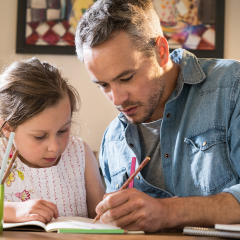Remote learning – January 2021
“This time last year, who could’ve imagined that…” is a phrase that we keep hearing as the world endures the Coronavirus (COVID-19) pandemic. Remote learning wasn’t something that most schools were prepared for, but we’re almost a year on now from the first lockdown and schools have risen to the remote learning challenge. With Ofsted focusing on how well children and learners are being educated remotely, Richard Sutton provides a synopsis of statutory requirements and evidence from Ofsted of good practice in remote learning.
Compliance
- Do KS1 pupils receive 3 hours of remote education per day?
- Do KS2 pupils receive 4 hours of remote education per day?
- Do KS3/4 pupils receive 5 hours of remote education per day?
- Do EYFS children have access to remote education? How does the school manage and monitor this, including reading, writing and mathematics
- What expectations does the school have for KS5 students? How does the school manage and monitor this?
- Does the school use a digital platform consistently? Are staff trained and confident in its use?
- To what extent does the school use textbooks and worksheets, for example? How is pupil’s work assessed / checked in these circumstances?
- Does the school use a combination of live and recorded remote lessons
- Do pupils have time to complete tasks and assignments independently?
- Does the school have robust procedures in place for checking, daily, whether pupils are engaging with their work (attendance and work completion)?
- Does the school have a named senior leader who has responsibility for the quality and delivery of remote education?
- How is the school overcoming barriers to digital learning?
- How is the school meeting the remote learning needs of SEND pupils? “Teachers are best-placed to know how the pupil’s needs can be most effectively met to ensure they continue to make progress even if they are not able to be in school due to self-isolating” (DfE).
- Is the work that the school sets meaningful and ambitious each day in a several subjects?
- Are pupils receiving feedback, at least weekly, using digitally facilitated or whole-class feedback where appropriate?
- Is there evidence that teachers use assessment strategies to modify activities, when necessary?
- Is there a remote learning policy published on the school website, setting out expectations for the school, for parents and for pupils?
- Is there an action plan to activate immediate remote learning for any individual pupil, small groups of pupils, whole classes, year groups or whole school?
- Is remote learning pedagogy understood by all teachers?
- Are safeguarding policies updated?
- Are support channels in place for parents, families or pupils who are struggling with remote learning?
- Have attendance processes been updated to reflect non-attendance / engagement in remote learning?
Good practice
- Does the remote curriculum align with the planned curriculum? If adaptations have been made, do teachers assess pupil’s prior knowledge and understanding to determine the extent to which adaptations are necessary? Do adaptations focus on the basics? Is there sufficient focus on practising and developing prior knowledge and skills?
- Practical subjects – how does teaching consider alternatives such as what can be done at home and the use of simulations, for example?
- Does the school make use of external resources, such as Oak National Academy? If so, have curriculum leaders ensured that chosen lessons are aligned with the school curriculum and the sequence of learning
- Curricular goals are made explicit, including topic end points.
- Don’t overcomplicate resources with too many graphics and illustrations that don’t add to content. Simple graphics that highlight the key concepts and features can be most effective.
- Do teachers have the same high expectations that they have when in the classroom?
- When using recorded lessons, does teaching particularly focus on absolute clarity of explanations as misunderstandings or misconceptions cannot be easily addressed?
- As pupils often find it harder to concentrate, the way that words and pictures or graphs are integrated is important. Text can be integrated with images where that is appropriate and doesn’t just encourage guessing.
- It’s often a good idea to divide content into smaller chunks. Short presentations or modelling of new content can be followed by exercises or retrieval practice.
- Feedback – do teachers use chatroom discussions, 1-to-1 interaction tools, interactive touch-screen questioning in live recorded lessons and adaptive learning software, for example?
- Are peer interactions facilitated, including chat groups or video-linking functions?
- Staying in contact with pupils – for example, do teachers use technology to automate communication or have they set up automated check-in emails for pupils to identify where they are with set tasks? Is there regular contact – leads to a degree of pupil accountability.
- Assessment is built into some online platforms and most textbooks. Low-stakes quizzes can be built into remote education, as can written assignments and retrieval practice activities. It can be helpful to make sure pupils are ‘warmed up’ and ‘readied’ for content through an introductory task or scene-setting. Pupils can then be invited to re-visit and process the main content further in an additional task or later lesson through retrieval practice.
- Because evidence suggests that concentration online is shorter than the length of a typical lesson, filming a classroom lesson may be ineffective.
- Different approaches to remote education suit different types of content and pupils. Mixed models may be effective in some cases. For example, using a ‘flipped learning’ model. In this, new content is taught through an asynchronous recorded lesson. Practice, tutoring, and feedback are then done synchronously.
- Engagement increases when pupils feel part of the school or college community. Whole-school digital assemblies and feedback, for example through newsletters to pupils and parents, can help them feel part of the community even when learning remotely.










